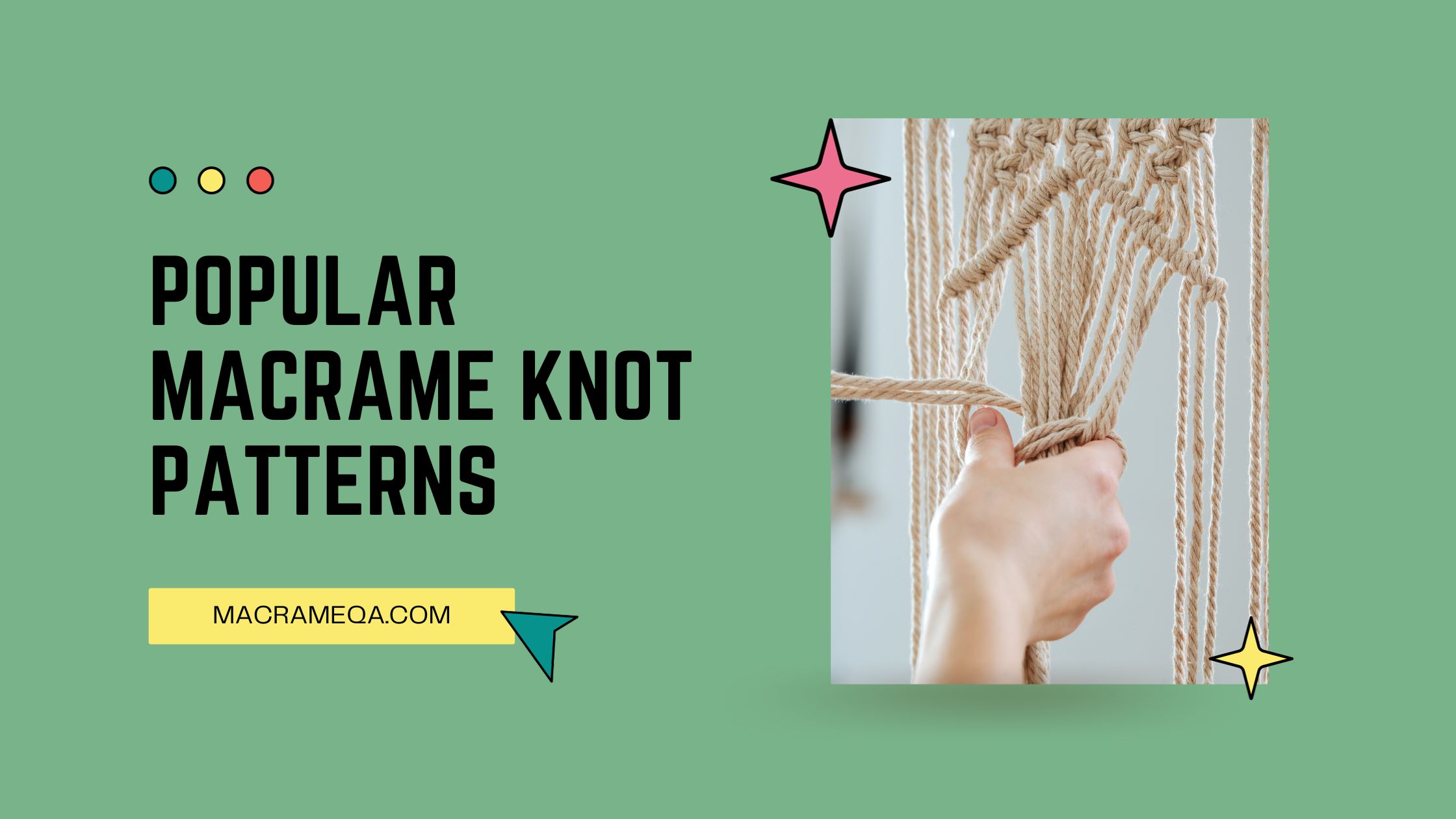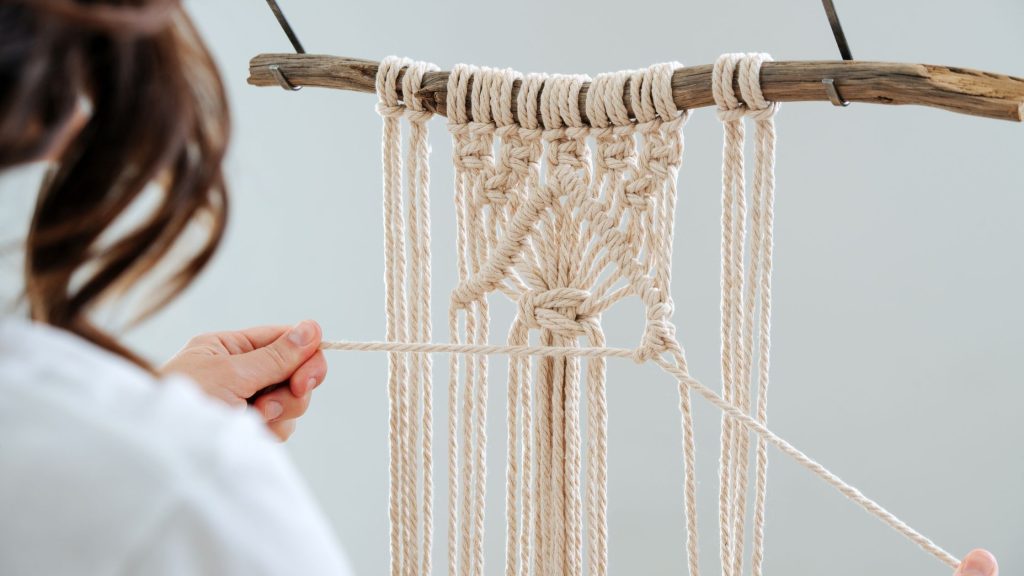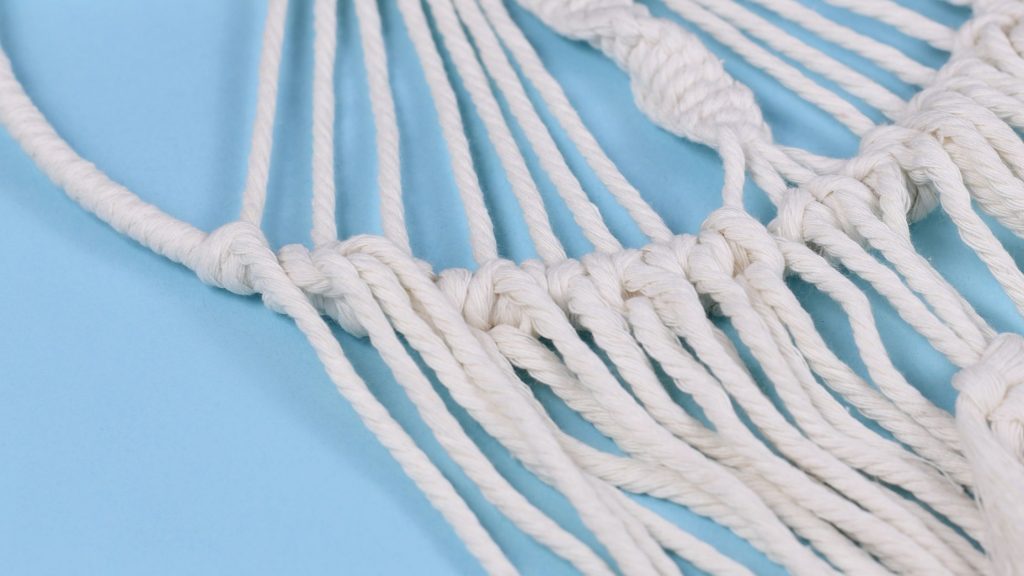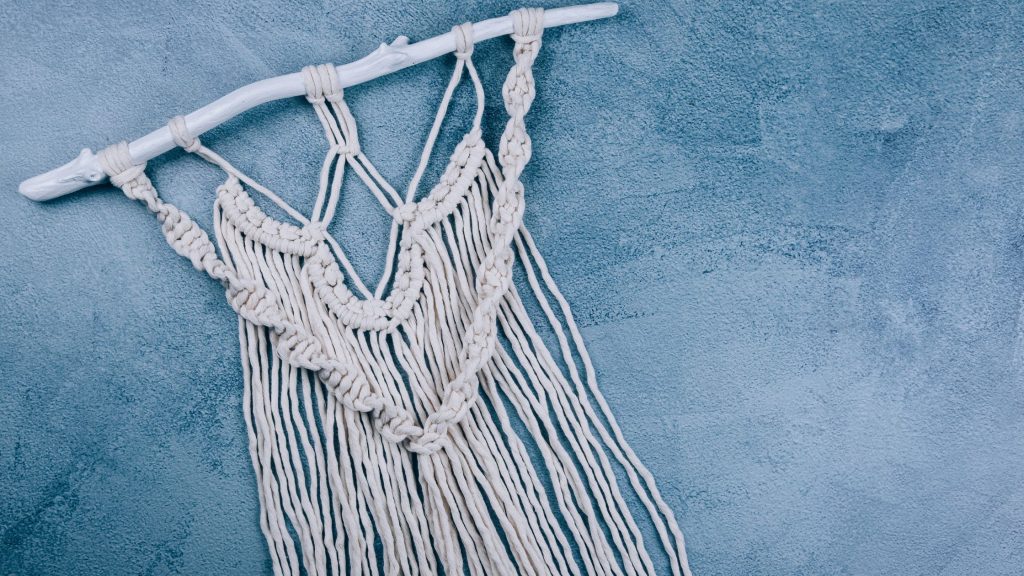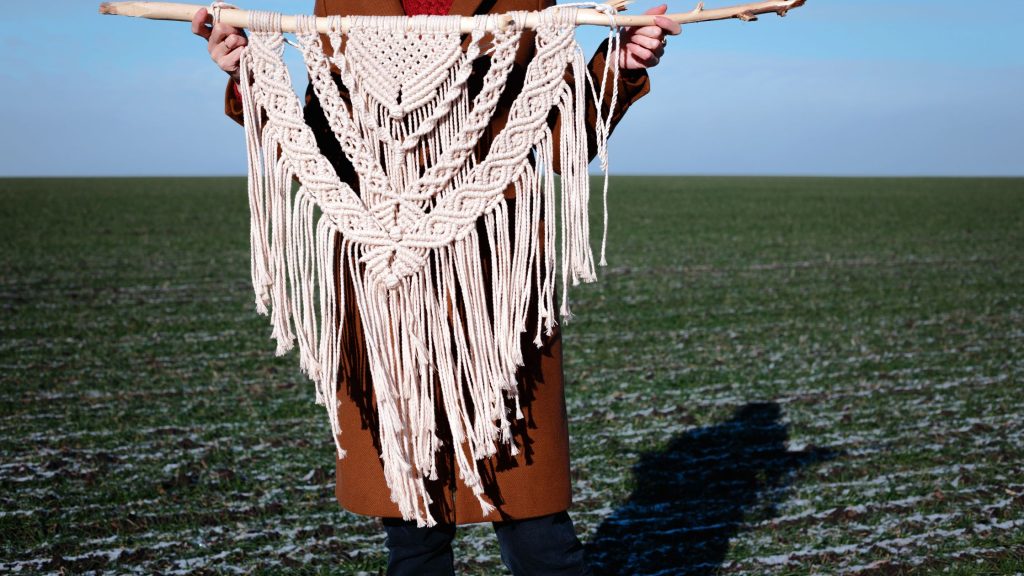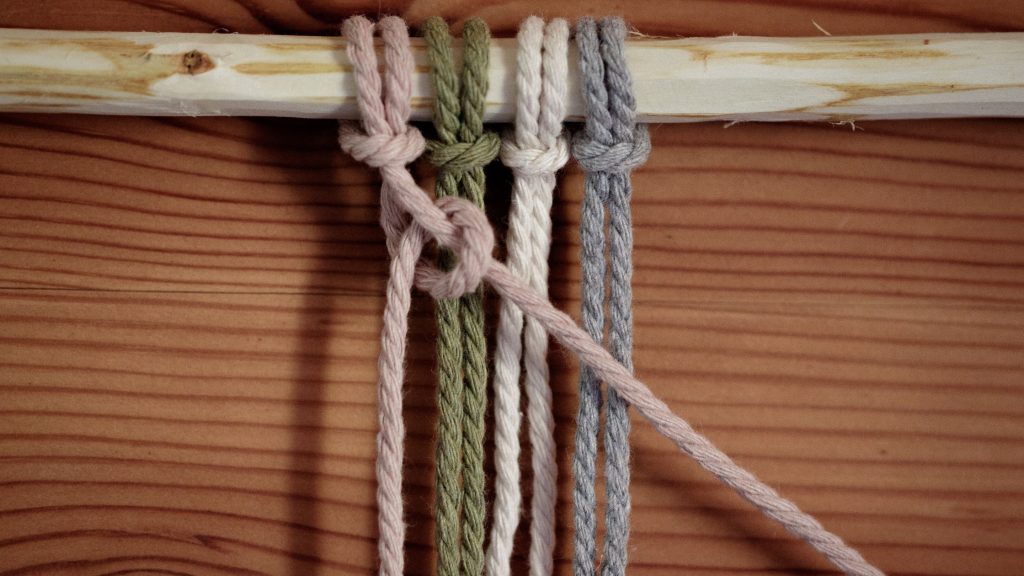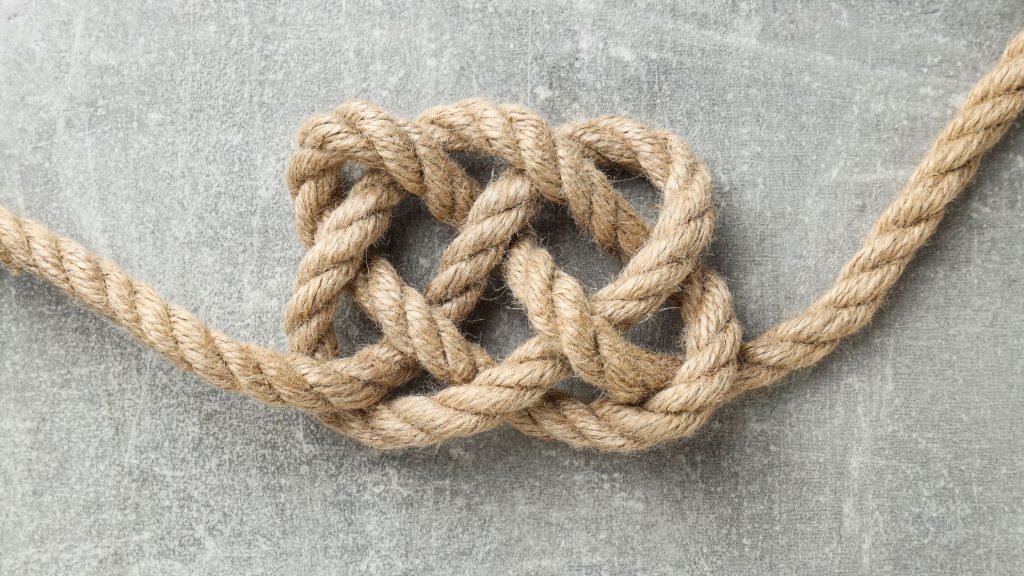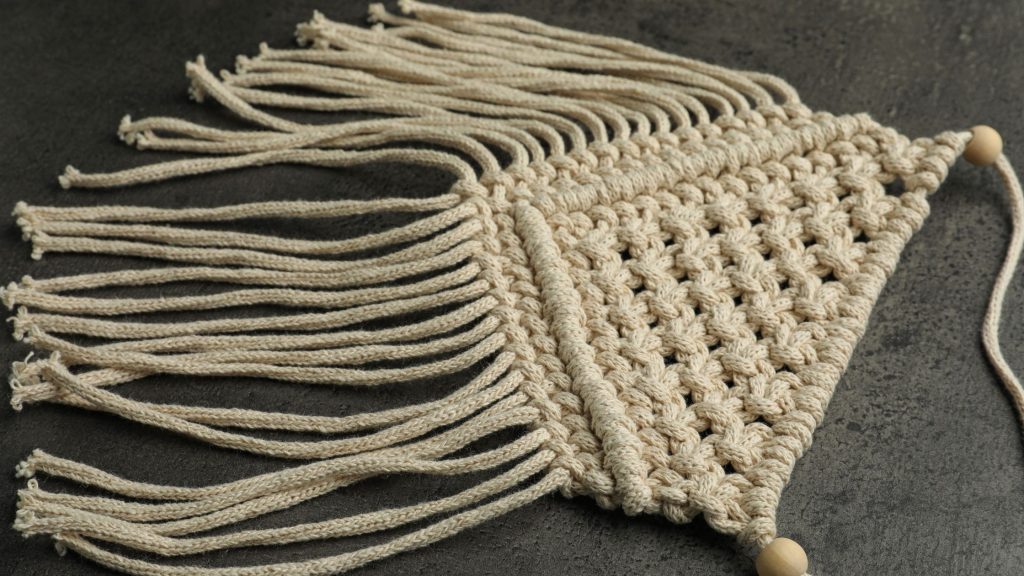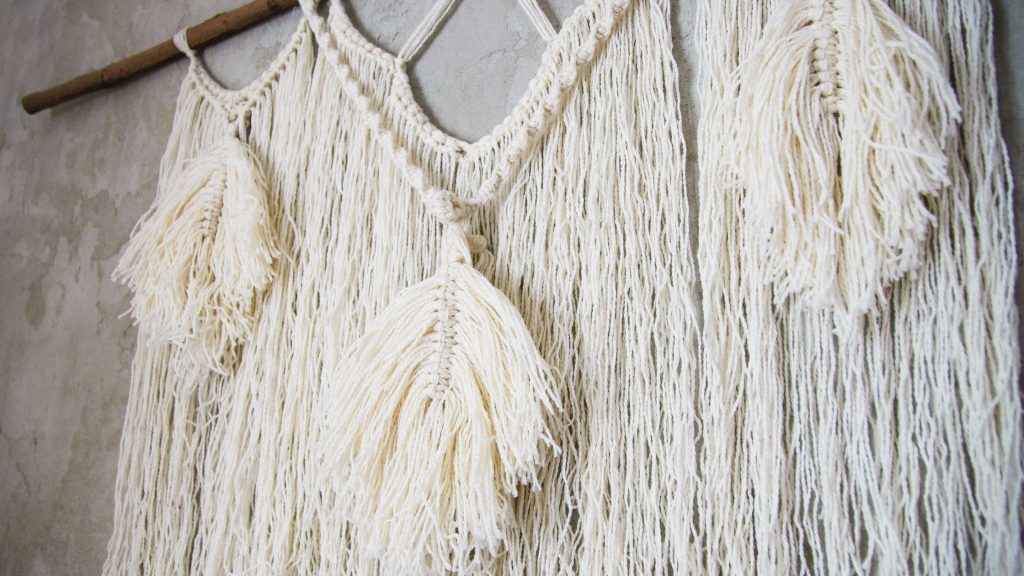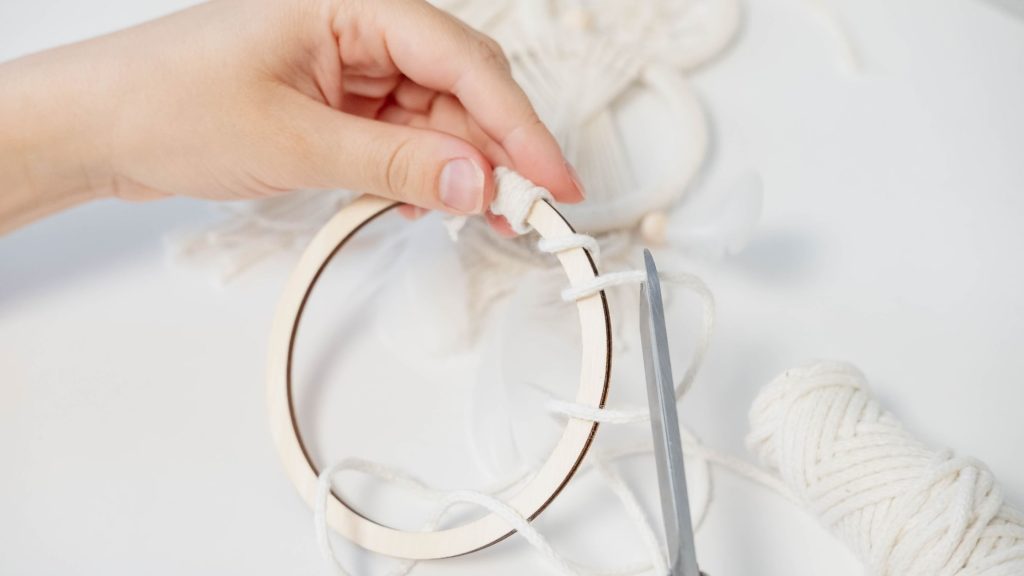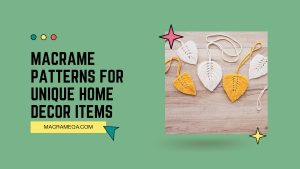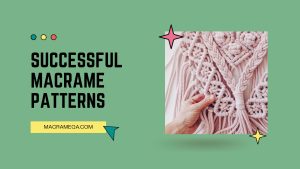Macrame knot patterns have been used for centuries to create intricate and decorative designs. From ancient civilizations to modern-day art forms, the history of these popular patterns is both fascinating and diverse. Whether you’re a seasoned macrame enthusiast or just beginning to explore the art, understanding the origins and evolution of these knot patterns can deepen your appreciation for this timeless craft. Let’s take a journey through time and explore the rich history behind popular macrame knot patterns.
Basic Knots Used in Macrame
Macrame, the ancient art of knotting cord or string to create intricate patterns and designs, relies on a few basic knots that form the foundation of the craft. These basic knots include the reef knot, square knot, double half hitch, and lark’s head knot. Each knot has its own unique purpose and adds a distinct element to macrame creations.
The reef knot, also known as the square knot, is one of the most fundamental knots in macrame. It is created by crossing one end of the cord over the other and then passing it under and through. This knot is commonly used to create the beginning and end of macrame projects.
The square knot is similar to the reef knot but is formed by twisting the cords in opposite directions before crossing them. It creates a symmetrical and secure knot that is widely used in various macrame designs.
The double half hitch is a knot that involves looping one cord around another and then pulling it through to create a hitch. This knot is especially useful for creating intricate patterns and adding texture to macrame pieces.
The lark’s head knot is another commonly used knot in macrame. It is created by folding the cord in half and then passing the looped end through another cord. This knot is often used to attach cords to a dowel or other base material in macrame projects.
These basic knots provide a solid foundation for beginners to learn and explore the art of macrame. By mastering these knots, you can create beautiful macrame creations and unleash your creative potential.
Origins of Macrame
Macrame has a rich history that spans across continents and centuries. Its origins can be traced back to ancient civilizations, and it has evolved and flourished throughout the Middle Ages and the Renaissance period.
Ancient Origins
The art of knotting cord has been practiced for thousands of years, with ancient civilizations such as the Egyptians, Chinese, and Arabs all incorporating macrame into their cultural traditions. In ancient Egypt, macrame was used to create intricate decorative textiles and jewelry. The delicate knotting techniques were also prevalent in Chinese culture, where macrame was used to create elaborate garments and accessories. The Arabs, known for their intricate knot work, utilized macrame to create ornamental designs in textiles and architecture.
Middle Ages
During the Middle Ages, macrame took on a different form as it became intertwined with the monastic life. Monks and nuns used macrame to create decorative and functional items for their monasteries, such as altar cloths, curtains, and belts. In addition to its practical uses, macrame became a form of artistic expression during this time, with intricate knotting patterns adorning religious artifacts.
Renaissance Period
The Renaissance period witnessed a resurgence of interest in macrame, as it became popularized among the nobility and wealthy merchants. Macrame was used to embellish clothing, create luxurious textiles, and decorate homes and palaces. The artistry and intricacy of macrame during this time showcased the wealth and status of the individuals who owned these magnificent pieces.
Macrame in Ancient Cultures
Macrame was not limited to ancient civilizations as a form of artistic expression; it also played a significant role in the cultural traditions of various societies.
Egyptian Macrame
In ancient Egypt, macrame was used to create intricate and ornamental textiles and jewelry. Egyptian artists utilized various knotting techniques to craft stunning pieces adorned with beads, shells, and gemstones. The knotting patterns often symbolized different aspects of their culture, such as religious beliefs and social status. Macrame was not only a form of artistic expression but also a way to showcase their skills and craftsmanship.
Chinese Macrame
Macrame had a significant presence in Chinese culture, where knotting techniques were highly esteemed. Chinese macrame, known as “Chinese knotting,” was used to create decorative and functional items such as garments, accessories, and decorative knots for ceremonies and celebrations. Chinese knotting incorporated intricate patterns and symbolism, and it was often passed down through generations as a cherished art form.
Arabian Macrame
Arabian macrame, also known as Arabic knotting, was characterized by its geometric patterns and intricate designs. Arabian artists excelled in the art of knotting, creating visually stunning textiles, rugs, and architectural elements. Macrame was an essential part of Arabian culture, with knotting techniques being used in clothing, jewelry, and numerous decorative items. The rich cultural heritage of Arabian macrame continues to inspire artists and crafters to this day.
Macrame in the Middle Ages
During the Middle Ages, macrame took on new significance and became intertwined with monastic life and decorative arts.
Monastic Macrame
In monasteries and convents, macrame served practical purposes as well as decorative ones. Monks and nuns used knotting techniques to create functional items such as belts, curtains, and altar cloths. The simplicity and durability of macrame made it an ideal medium for monastic communities, allowing them to produce utilitarian items while also creating beautiful works of art.
Decorative Macrame
In addition to its practical uses, macrame during the Middle Ages became a respected form of decorative art. Intricate knotting patterns adorned religious artifacts, including chalices, crosses, and vestments. The knot work symbolized spiritual meanings and acted as a visual representation of faith. Macrame in the Middle Ages showcased the blending of craftsmanship and religious devotion, elevating the art form to new heights.
Macrame During the Renaissance Period
The Renaissance period witnessed a revitalization of macrame as it gained popularity among the nobility and wealthy merchants.
Macrame in Fashion
During the Renaissance, macrame played a prominent role in fashion, particularly among the upper classes. Elaborate knotting techniques were used to embellish clothing, creating luxurious garments adorned with intricate patterns and designs. Macrame added a touch of opulence and uniqueness to garments, allowing individuals to showcase their wealth and status through their attire.
Macrame in Home Decor
Macrame also became a prevalent feature in home decor during the Renaissance period. Rich nobles and merchants used macrame to decorate their palaces and mansions, adorning walls, doorways, and furniture with intricate macrame hangings and curtains. These elaborate macrame designs added a sense of grandeur and sophistication to living spaces, transforming them into works of art.
Macrame Revival in the 1970s
The 1970s saw a resurgence of interest in macrame, thanks in large part to the influence of hippie culture and the desire for handmade, bohemian-style decor.
Hippie Culture Influence
The countercultural movement of the 1960s and 1970s played a significant role in the resurgence of macrame. The hippie movement embraced handcrafted items, natural materials, and a back-to-nature lifestyle. Macrame, with its earthy aesthetic and DIY nature, became a popular craft among the hippies. It offered a creative outlet for self-expression, allowing individuals to create their own unique macrame pieces that reflected their bohemian ideals.
Macrame Reinvented
During the 1970s, macrame saw a reinvention as artists and crafters experimented with new designs and techniques. Macrame plant hangers became particularly popular, providing a trendy and practical way to display houseplants. Wall hangings, curtains, and room dividers adorned homes as individuals embraced the natural, handmade aesthetic of macrame. The versatility and adaptability of macrame made it an ideal medium for self-expression during this era.
Modern Macrame Trend
Macrame continues to be a popular craft and art form in the modern era, gaining newfound appreciation and recognition.
Contemporary Macrame Artists
Today, there is a vibrant community of contemporary macrame artists who push the boundaries of the craft. These artists use macrame to create stunning and innovative pieces that blur the line between art and craft. From large-scale installations to intricate jewelry, contemporary macrame artists showcase the true potential of the medium.
Incorporation in Interior Design
Macrame has also made a resurgence in interior design, with designers and homeowners incorporating macrame into their spaces. Macrame wall hangings, plant hangers, and curtains add a touch of bohemian charm and natural texture to modern interiors. The versatility of macrame allows it to complement various design styles, from minimalist to eclectic, making it a versatile and appealing choice for interior decor.
Popular Macrame Knot Patterns Today
Macrame knot patterns have evolved and diversified over time, opening up a world of possibilities for crafters and artists.
Plant Hangers
Macrame plant hangers have experienced a resurgence in popularity in recent years. These hanging plant holders add a touch of greenery and bohemian style to any space. Crafters can play with different knot patterns and designs to create unique plant hangers that suit their personal style and the aesthetic of their home.
Wall Hangings
Macrame wall hangings provide a striking and eye-catching focal point in any room. Crafters can experiment with various knot patterns, lengths, and materials to create intricate and visually appealing designs. Wall hangings can be customized to match the color scheme and style of a room, making them a versatile and personalized decor choice.
Macrame Jewelry
Macrame knotting techniques can also be used to create beautiful and unique pieces of jewelry. Necklaces, bracelets, and earrings made with macrame offer a bohemian and handmade aesthetic that stands out. Crafters can incorporate beads, gemstones, or charms into their macrame jewelry designs to add an extra touch of personalization.
Macrame Accessories
Beyond plant hangers and jewelry, macrame can be used to create a wide range of accessories. From handbags and belts to keychains and bookmarks, macrame offers endless possibilities for crafting useful and stylish items. These accessories can be customized to suit individual preferences and make unique gifts for loved ones.
Macrame as a Therapeutic Craft
In addition to its aesthetic appeal, macrame also offers various therapeutic benefits, making it a popular craft for individuals seeking stress relief and creative fulfillment.
Stress-Relief Benefits
Engaging in macrame can have a calming and meditative effect on the mind. The repetitive actions of knotting and weaving can help reduce stress and anxiety, allowing individuals to focus on the present moment and find a sense of relaxation. Macrame provides an opportunity to disconnect from technology and daily stressors, promoting mental well-being.
Mindfulness and Creativity
Macrame encourages mindfulness, as crafters must pay attention to each knot and movement. The act of creating something with one’s own hands promotes a sense of accomplishment and boosts self-esteem. Engaging in macrame also fosters creativity and self-expression, allowing individuals to explore different knot patterns and experiment with colors and textures.
Conclusion
From ancient civilizations to modern times, macrame has captivated people’s imagination and served as a creative outlet for self-expression. Its rich history and diverse range of knot patterns continue to inspire artists and crafters around the world. Whether you’re creating intricate wall hangings, trendy plant hangers, or stylish jewelry, macrame offers a versatile and fulfilling craft that blends artistry, mindfulness, and creativity. So grab your cords and get knotting – the possibilities are endless!

